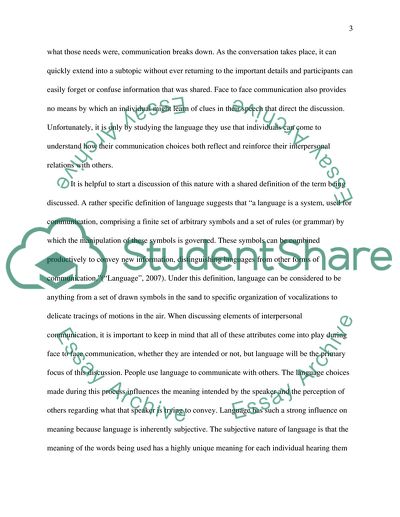Cite this document
(Human Communication Term Paper Example | Topics and Well Written Essays - 3000 words, n.d.)
Human Communication Term Paper Example | Topics and Well Written Essays - 3000 words. Retrieved from https://studentshare.org/humanitarian/1744088-in-any-type-of-discourse-involving-tow-or-more-people-in-face-to-face-interaction-how-doese-the-language-they-use-reflect-and-reinforce-interpersonal-relations-between-them
Human Communication Term Paper Example | Topics and Well Written Essays - 3000 words. Retrieved from https://studentshare.org/humanitarian/1744088-in-any-type-of-discourse-involving-tow-or-more-people-in-face-to-face-interaction-how-doese-the-language-they-use-reflect-and-reinforce-interpersonal-relations-between-them
(Human Communication Term Paper Example | Topics and Well Written Essays - 3000 Words)
Human Communication Term Paper Example | Topics and Well Written Essays - 3000 Words. https://studentshare.org/humanitarian/1744088-in-any-type-of-discourse-involving-tow-or-more-people-in-face-to-face-interaction-how-doese-the-language-they-use-reflect-and-reinforce-interpersonal-relations-between-them.
Human Communication Term Paper Example | Topics and Well Written Essays - 3000 Words. https://studentshare.org/humanitarian/1744088-in-any-type-of-discourse-involving-tow-or-more-people-in-face-to-face-interaction-how-doese-the-language-they-use-reflect-and-reinforce-interpersonal-relations-between-them.
“Human Communication Term Paper Example | Topics and Well Written Essays - 3000 Words”, n.d. https://studentshare.org/humanitarian/1744088-in-any-type-of-discourse-involving-tow-or-more-people-in-face-to-face-interaction-how-doese-the-language-they-use-reflect-and-reinforce-interpersonal-relations-between-them.


